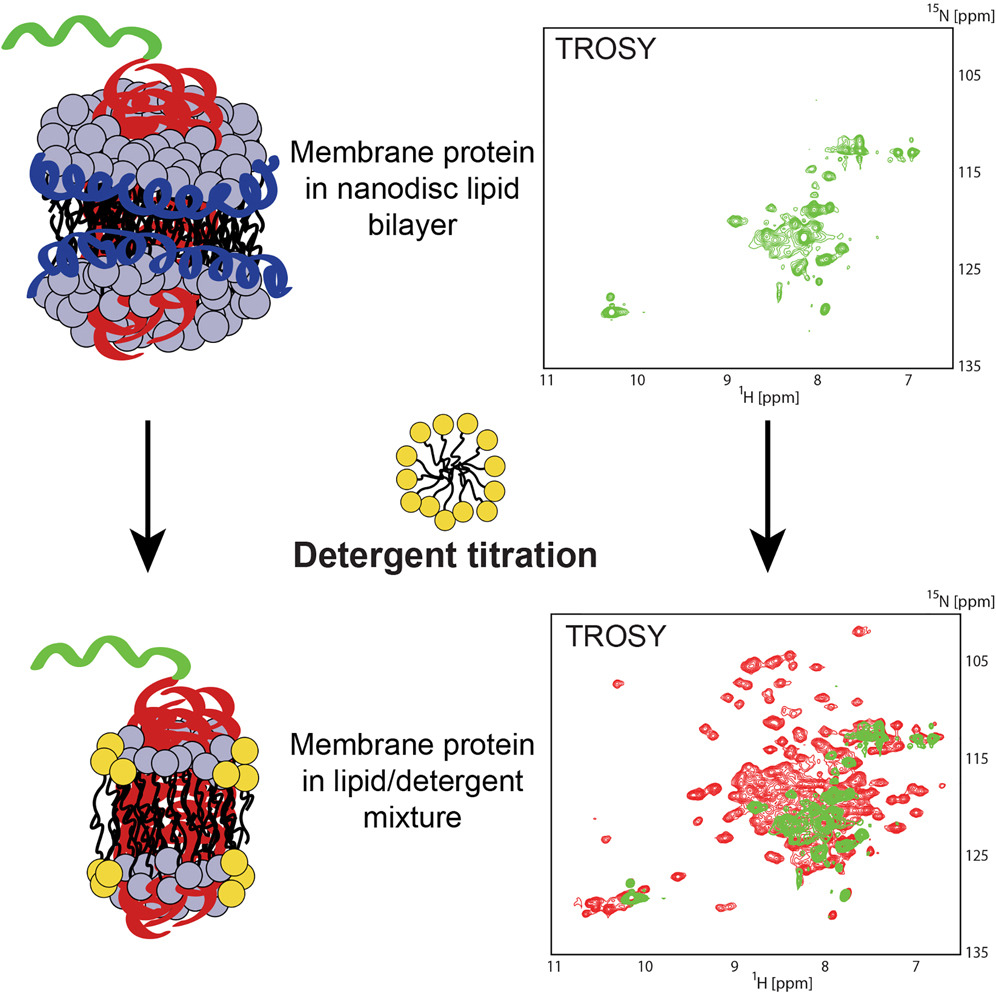From Nanodiscs to Isotropic Bicelles: A Procedure for Solution Nuclear Magnetic Resonance Studies of Detergent-Sensitive Integral Membrane Proteins.
By Aisha Laguerre, Frank Löhr, Erik Henrich, Beate Hoffmann, Norzehan Abdul-Manan, Peter J. Connolly, Eduardo Perozo, Jonathan M. Moore, Frank Bernhard, Volker Dötsch.
Published in Structure 2016 Oct 4;24(10):1830-1841. PMID: 27618661. PMCID: PMC5064851. Link to publication page.
Core Facility: Membrane Protein Expression/Purification.

Abstract
Nanodiscs and isotropic bicelles are promising membrane mimetics in the field of solution nuclear magnetic resonance (NMR) spectroscopy of integral membrane proteins (IMPs). Despite varied challenges to solution NMR studies of IMPs, we attribute the paucity of solution NMR structures in these environments to the inability of diverse IMPs to withstand detergent treatment during standard nanodisc and bicelle preparations. Here, we present a strategy that creates small isotropic bicelles from IMPs co-translationally embedded in large nanodiscs using cell-free expression. Our results demonstrate appreciable gains in NMR spectral quality while preserving lipid-IMP contacts. We validate the approach on the detergent-sensitive LspA, which finally allowed us to perform high-quality triple-resonance NMR experiments for structural studies. Our strategy of producing bicelles from nanodiscs comprehensively avoids detergent during expression and preparation and is suitable for solution NMR spectroscopy of lipid-IMP complexes.


